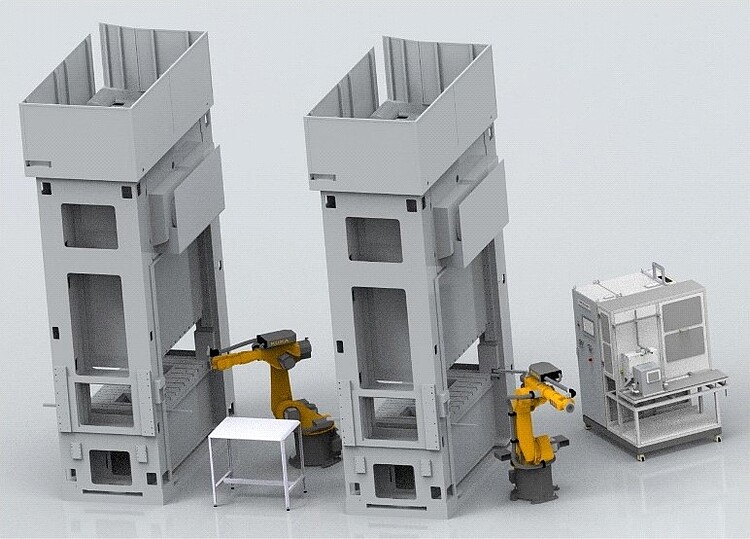ERProFit - Energy and resource efficient production - Low-oxygen forging through retrofitting existing forging systems

| E-Mail: | massivumformung@ifum.uni-hannover.de |
| Year: | 2021 |
| Funding: | BMWi - Bundesministeriums für Wirtschaft und Energie |
| Is Finished: | yes |
Resource efficiency and reduction of CO2 emissions are becoming increasingly important and are politically and socially contributing to climate and environmental protection. One of the largest emitters of greenhouse gases is the manufacturing sector. Large amounts of CO2 are produced during the production of construction materials and the production of goods, made from these materials.
During the hot massive forming of steel materials, oxidation leads to a pronounced formation of scale, which is approx. 2 - 3% of the mass. This unusable material portion is still produced, transported and heated at great expense. In addition, efforts are made during the process to keep scale out of the forming zone (in the form of descaling steps), as it greatly accelerates tool wear due to its high hardness. Avoiding the formation of scale leads to CO2 savings along the entire value chain. Less raw material would have to be produced in the steelworks and transported to the producing companies, which leads to reduced ore production and thus conserves natural resources. Hot forming companies could make their processes leaner and more efficient, among other things by eliminating the descaling step and increasing tool life.
This project investigates the extent to which tinder formation can be inhibited by forming in an oxygen-poor atmosphere. Industrial exhaust gases should be used to create this atmosphere. This makes it possible to derive value-added benefits from the exhaust gases before they are emitted into the environment. Another goal is to develop a concept for the gas-tight encapsulation of existing forming machines. This is intended to enable small and medium-sized enterprises (SMEs) in particular to benefit from the results of this project, as it will prevent costly new purchases for the transforming companies.




















